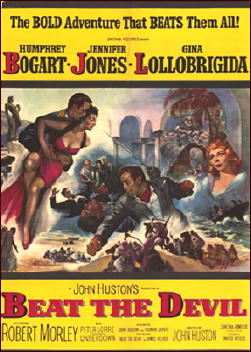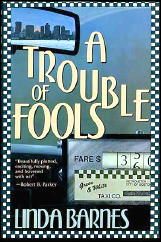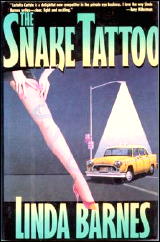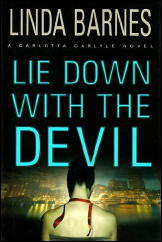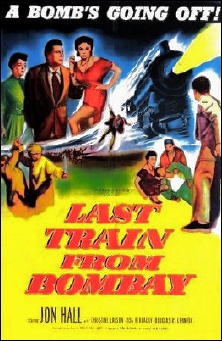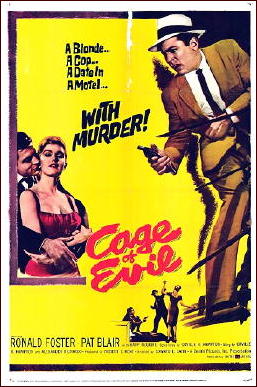December 2010
Monthly Archive
Mon 6 Dec 2010
COLLECTING PULPS: A MEMOIR
PART SIX — ARE PULP COLLECTORS CRAZY?
by Walker Martin
Therapists do not like to hear us use the term “crazy,” but for the most part mental health professionals do often see such collecting activities as being a mental disorder. Maybe I should have titled the subject “Is Collecting a Mental Disorder?”
But if I and some of the other collectors I know are insane, then we probably would use the term “crazy.” In fact I just came across an online article titled “11 Craziest Mental Disorders,” and “Bibliomania: The Collecting of Too Many Books”, was one of the 11 disorders.
What brings all this up is that a long time collecting friend of mine recently called me and said that his wife and a therapist had just blindsided him with an intervention type meeting after dinner. He was still stunned at their treachery and quite upset.
Their attitude was that his book and pulp collection was all junk, clutter, and a waste of money. In fact the therapist said that my friend should be under the care of a professional and under heavy medication due to depression. He evidently saw the collection as a sign of depression and even complained about the collector reading too much.
Now this is funny because I don’t think my friend reads much at all. He’s in his sixties, still working and certainly does not spend his leisure time reading like I do. I read at least a couple hours or more each day and often my friend does not read at all during the day.
I think this “reading too much” theme is the typical non-collecting spouse complaint. For the most part, and there are exceptions, I have found that many women resent it when their husbands or boyfriends read a book.
Reading is a solitary activity and they feel left out or perhaps they feel that the husband is ignoring them or not paying attention to them. I have heard this complaint many times over the years from other readers, and even my wife gripes about me always “with my nose in a book.”
But my friend certainly came to the right guy for a sympathetic ear. Those of you have been reading these memoirs so far might imagine the advice I gave him. I told him in my opinion, as a veteran reader and collector, his wife and the therapist are the ones with a mental disorder.
Too many people just concentrate on their jobs and family. Hell, we all have jobs and family, but what makes life even more interesting is reading and collecting. Many of our friends and relatives go through life really not interested in much at all. At least reading and collecting shows that you have some interest and passion in some subject, other than the routine of working and family matters.
The above is a true story and actually happened. By the way, I am not talking about myself, but such scenes have happened to me over the years. A serious reader/collector will not get sympathy from the non-reader/collector. And these people make up the majority of our friends and relatives.
If you talk to me during Windy City or PulpFest, I’ll be glad to discuss this in more detail including the name of the collector. In fact, he will probably be in attendance.
So as Shakespeare once said, if you are a collector, “get thee to a nuthouse.” Or come to think of it maybe he was talking about a nunnery.
Previously on Mystery*File: Part Five — Remembering Mike Avallone.
Sun 5 Dec 2010
REVIEWED BY DAN STUMPF:
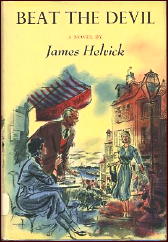
JAMES HELVICK – Beat the Devil. J. B. Lippincott, hardcover, 1951. Penguin, UK paperback, 1971, under the author’s real name, Claud Cockburn. Film: United Artists, 1953. Screenplay: Truman Capote & John Huston; director: John Huston.
I reviewed the film version of Beat the Devil earlier on this blog, but in a notable I’m-glad-I-read-it vein, there’s also the print version, an inexpensive copy of which I found thanks to the nice folks who hang out here. The Bogart film is a legendary mess, and I had fun seeing how the two of them compare.
Truman Capote’s script for the movie stays remarkably faithful to the book, with the notable exception that the book offers a couple of action scenes, which are carefully leeched out of the movie, to be replaced with something they thought was funny.
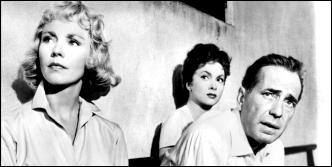
Thus an ambush on a lonely beach becomes a runaway jalopy, a tragedy at sea turns into a mere mishap, and one of the best bits in the book — a lengthy prison stay where the characters reveal some surprising facets of themselves — is replaced by a quick joke about Rita Hayworth.
Helvick/Cockburn’s book offers some engaging, often surprising characters (replaced in the movie by competent character actors given nothing to do) and off-hand moments of casual chivalry when they find themselves rising to occasions of their own making — again, replaced in the film with limp humor.
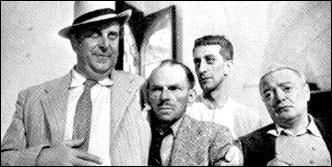
More important, as the book ended I saw what must have drawn director John Huston to film it: a moment when fate seems to smile at the characters and their little dreams, only to break out laughing at them the next moment. It’s a well-done resolution that recalls bitter wrap-ups in The Maltese Falcon and Treasure of the Sierra Madre, which I find even more surprising since Huston and Capote replaced it in the film with a cheap joke. Oh well.
At least the film offers one interesting variation, when the two female leads (played by Jennifer Jones and Gina Lollobrigida in the film) find themselves in competition for each other’s husbands. In the book, they go skinny-dipping to check out each other’s bodies. In the film, Jones simply finds an excuse to wave her butt repeatedly in Gina’s face, a moment of cheerful vulgarity so engaging one wishes the rest of the film offered more of it.
Sat 4 Dec 2010
REVIEWED BY WALTER ALBERT:
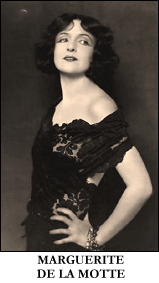
THE FINAL EXTRA. Gotham Productions / Lumas Film Corp., 1927. Marguerite De La Motte, Grant Withers, John Miljan, Frank Beal, Joseph W. Girard, Billy “Red” Jones, Leon Holmes. Story and scenario by Herbert C. Clark; cinematography by Ray June. Director: James P. Hogan. Shown at Cinevent 42, Columbus OH, May 2010.
Pat Riley (Grant Withers) greatly admires his senior colleague, reporter Tom Collins (Frank Beal) who is murdered when he’s about to reveal the name of the leader of a gang of bootleggers in an expose he’s writing for his newspaper.
Riley, who’s sweet on Collins’ daughter Ruth (Marguerite de la Motte), vows to finish the story, a promise that leads to Ruth being trapped in a house with the murderer as Riley races to her rescue.
Hogan would later direct entries in Paramount’s Bulldog Drummond and Columbia’s Ellery Queen series, while Grant Withers would have a career in sound films that included programmers, serials and, later in his career, several of John Ford’s features.
The Final Extra was a fast-paced, exciting film that was expertly produced in all departments, and was a splendid conclusion to my 34th Cinevent.
Sat 4 Dec 2010
REVIEWED BY BARRY GARDNER:
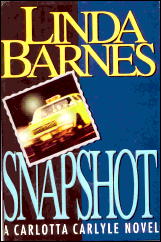
LINDA BARNES – Snapshot. Carlotta Carlyle #5. Delacorte Press, hardcover, 1993. Dell, paperback, 1994. Reprinted several times since, in both hardcover and paperback.
I don’t think there’s any doubt that Linda Barnes is in the top five female PI writers, and I may enjoy her more than any but Marcia Muller. Her ex-cop, part-time cabby PI, Carlotta Carlyle, is one of my favorites.
Her latest case begins when a psychiatrist brings a woman to her office who is obsessed with the recent death of her child from a form of leukemia. The woman is not convinced that something didn’t go awry at the highly regarded hospital where the child died, and the psychiatrist thinks that having Carlyle lay her doubts to rest is good therapy.
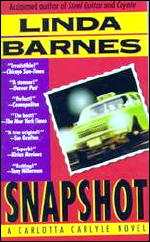
He has no idea that her fears are well-founded; the child’s doctor was one of the country’s best. Carlotta takes the case, and begins her investigation.
At the same time, she has other problems. Someone steals her trash cans in the middle of the night, trash and all, and her 11-year-old Hispanic Little Sister has run away from home, and has been seen regularly in the company of a grown man.
Barnes continues to impress me. Carlyle is a believable human being, possessed of her fair share of problems but refreshingly free from the anger and/or angst of so many of today’s characters.
The supporting cast is nicely drawn, and Barnes tells her story well in straightforward prose. The plot didn’t have me tearing my hair out, which considering my luck with the rest of the PI novels I’ve read lately was a major triumph. Good book.
— Reprinted from Ah, Sweet Mysteries #10, November 1993.
The Carlotta Carlyle series —
1. A Trouble Of Fools (1987)
2. The Snake Tattoo (1989)
3. Coyote (1990)
4. Steel Guitar (1991)
5. Snapshot (1993)
6. Hardware (1995)
7. Cold Case (1997)
8. Flashpoint (1999)
9. The Big Dig (2000)
10. Deep Pockets (2004)
11. Heart of the World (2006)
12. Lie Down with the Devil (2008)
Fri 3 Dec 2010
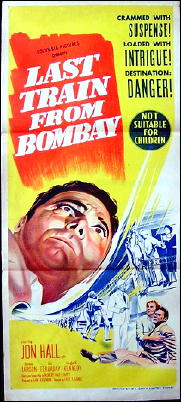
LAST TRAIN FROM BOMBAY. Columbia Pictures, 1952. Jon Hall, Christine Larsen, Lisa Ferraday, Douglas Kennedy, Michael Fox, Donna Martell, Matthew Boulton, James Fairfax. Director: Fred F. Sears.
With civil war about to break out in India, the first assignment of American diplomat Martin Viking there is a doozey.
Viking, as played by Jon Hall just before he became Ramar of the Jungle, is a naive fellow, you’re led to believe at first, who nonetheless turns out to be top notch when it comes to killers and thuggees of all sorts (but mostly inept), as he proves over and over again in hand-to-hand combat.
Blamed for the murder of his wartime friend who gets him into trouble from the very beginning all the way through to the end of this 72-minute adventure, Viking encounters an unfriendly Captain Tamil of the Bombay police (Michael Fox) and two women who prove to be both friendly and unfriendly (or vice versa):
Christine Larsen plays the daughter of a retired British officer as they take a trip by auto together to see the Taj Mahal in the moonlight, while Lisa Ferraday is a French woman once married to an American who now lays in wait for unsuspecting travelers in a tavern where Viking seeks refuge.
And believe it or not, I almost forgot to mention the train.
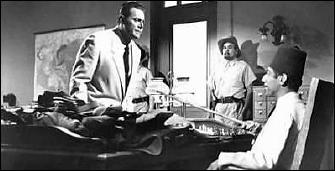
Viking is on it for no more than five minutes during the entire movie, but nonetheless it’s the entire crux of the plot, which consists of his being able to stop an unknown band of conspirators from blowing it up as it makes its way across the subcontinent of India, among the passengers being a very important Indian ruler and his entire entourage.
Filmed like an action-packed Columbia Pictures afternoon serial, there is little time to spend on subtleties. And like action-packed Columbia Pictures afternoon serials, there is a continual feeling of being cheated, what with death-defying escapes coming all too easily at the end of one chapter and the beginning of the next – especially the last one, wherein Viking and his fellow female captive at the time simply walk out of the dungeon where they’re being held captive.
No self-respecting villain would ever be this inept – ever!
Fri 3 Dec 2010
Posted by Steve under
ReviewsNo Comments
RON ROSENBAUM – Murder at Elaine’s. Stonehill, hardcover, 1978. No paperback edition.
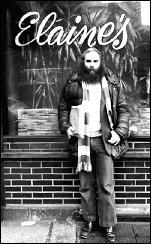
Elaine’s is said to be the hottest literary hangout in Manhattan, lionized by all the most ultra-sophisticates of western society. The lights go out, except for a silencer a shot rings out, and there on the floor is the former publisher of Media Confidential.
Motive: a literary feud? Or is it some ramification of the dope rackets?
This old-fashioned murder mystery was previously serialized in High Times Magazine, and a more unlikely blend is difficult to imagine.
Solved in passing is the well-known Dickens/Edwin Drood case, and revealed as well is the ending of a famous Agatha Christie novel.
The “in” crowd will gobble this up, which hardly makes it an automatic must for the true mystery fan. Still, part of the plot are those missing eighteen minutes from an infamous White House tape. Wouldn’t you really like to know who done what to whom?
— Reprinted from The MYSTERY FANcier, Vol. 3, No. 5, Sept-Oct 1979. Very slightly revised. (This review appeared earlier in the Hartford Courant.)
RIP Elaine Kaufman: This celebration of her life from the “Diner’s Journal” section of The New York Times says it all, certainly better than I, having never seen the outside of Elaine’s, much less the inside. From the obituary page:
“Elaine Kaufman, who became something of a symbol of New York as the salty den mother of Elaine’s, one of the city’s best-known restaurants and a second home for almost half a century to writers, actors, athletes and other celebrities, died Friday in Manhattan. She was 81.”
Fri 3 Dec 2010
REVIEWED BY CURT J. EVANS:
J. S. FLETCHER – Todmanhawe Grange. Thornton Butterworth, UK, hardcover, 1937. US title: The Mill House Murder, Alfred A. Knopf, 1937.
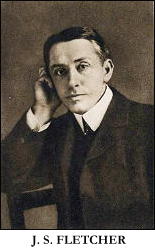
The final mystery novel by the extremely prolific mainstream and mystery genre novelist J. S. Fletcher, Todmanhawe Grange was published posthumously, two years after the seemingly indefatigable author’s death in 1935 at nearly seventy-two years of age.
Completed by Edward Powys Mathers, aka Torquemada, the infamous crossword puzzle creator and crime fiction reviewer for the London Observer (who himself died at the age of forty-six four years later), Todmanhawe Grange is, surprisingly enough, given that it came at the end of a long line of over eighty Fletcher mystery novels, the best Fletcher crime tale I have read.
J. S. Fletcher turned to the mystery and thriller genre in 1901, after enjoying some success as a mainstream novelist, particularly as a regionalist in the manner of Thomas Hardy and Eden Phillpotts. Though Fletcher continued to write mainstream novels (largely about his native Yorkshire), mystery tales increasingly dominated his output, especially after the publication in 1919 of The Middle Temple Murder, the mystery famously praised by President Woodrow Wilson.
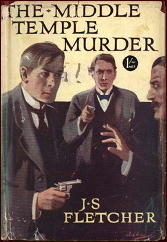
Alfred Knopf, Fletcher’s canny American publisher, never tired of reminding the reading public of this fact; and whether because of this or some other reason (Knopf’s publicity campaign probably was the best by an American publisher prior to Charles Scribners’ promotion of S. S. Van Dine in the second half of the 1920s), Fletcher became known for a time in the United States as the greatest English mystery writer after Arthur Conan Doyle (this view was not shared in England).
Fletcher, who naturally enjoyed the money this publishing success was bringing in, responded by producing ever more works of mystery fiction, both novels and short story collections. Many of his earlier, pre-Middle Temple Murder mystery novels that had not originally published in the United States were reprinted at this time as well (without informing readers that they were reprints), resulting in the regular publication of four or more Fletcher mystery volumes a year. Not for nothing did critics refer to the “Fletcher Mill.”
By the 1930s the Fletcher vogue had passed and Fletcher was seen even in America as a passe, unexciting writer. Better detective novelists like S. S. Van Dine, Ellery Queen, Agatha Christie, Dorothy L. Sayers, Anthony Berkeley, John Rhode, J. J. Connington, and Freeman Wills Crofts had become well-known, and simultaneously Fletcher’s mysteries, never the most inspired in truth, largely had become ever more mechanical and dull.
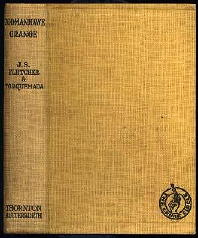
After his death, his books quickly fell out of print and today he survives in mystery genre history essentially as a one-work writer, the author of The Middle Temple Murder (praised — did I mention? — by Woodrow Wilson).
So imagine my surprise when I read Todmanhawe Grange and found that it was quite good, succeeding both as a puzzle and a crime novel of atmosphere and local color.
Surely some of the credit for the merit of the puzzle must go to Torquemada (Fletcher tended to be a loose mystery plotter, often eschewing the fair play convention of the Golden Age), yet the novel is as well the most atmospheric and engrossing crime tale that Fletcher had written in some years.
In Todmanhawe Grange, we read of the last exploit of Ronald Camberwell, a private inquiry agent introduced by Fletcher late in his writing career, in 1931. Camberwell himself is not particularly interesting, but the setting, a Yorkshire mill town, is very well-conveyed, as are the people residing there.
The murder centers around the affairs of James Martenroyde, head of wealthy textile manufacturing family. Martenroyde, affianced to a much younger woman, contacts Camberwell’s firm to investigate certain delicate matters. The blustery night of Camberwell’s arrival in the mill town, John Martenroyde is found dead in the mill weir. His death, of course, is not a natural one.
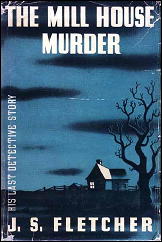
Two additional murders follow — as well as Fletcher’s much-loved lengthy inquests — and the reader is kept engaged throughout all these events, even the inquests (much of the second inquest was written by Torquemada, who provides excellent material and forensic detail that Fletcher himself tended to scamp in his mysteries).
The tale takes a rather Gothic twist and ends up bearing some resemblance, interestingly, to something out of the mind of Ruth Rendell (writing as Barbara Vine).
As pointed out earlier, a goodly share of the credit for the success of Todmanhawe Grange must go to Torquemada, yet he wrote, according to his own admission, only the final quarter of the tale (except for the very last line, which followed Fletcher’s last dictates; the rest of the conclusion followed an outline).
For whatever reason, Fletcher seems to have put some extra effort into the last work, and the effort shows.
Thu 2 Dec 2010
A 1001 MIDNIGHTS Review
by Bill Pronzini & Marcia Muller:
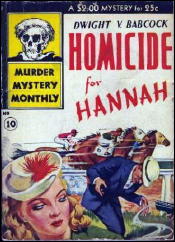
DWIGHT V. BABCOCK – A Homicide for Hannah. Alfred A. Knopf, hardcover, 1941. Pulp magazine reprint: Two Complete Detective Books, November 1941. Paperback reprints: Avon Murder Mystery Monthly #10, 1943; Avon #68, 1945; Avon #332, 1951.
Dwight V. Babcock was a prolific contributor to the pulps in the 1930s, and among the best of the writers developed by Joseph T. “Cap” Shaw, Black Mask’s editor from 1926-1936 and the guiding force in the development of the type of fiction he called “hard, brittle … a full employment of the function of dialogue, and authenticity in characterization and action.”
In 1944, after publishing two of his three mystery novels, Babcock went to work for Universal Studios, for which he scripted numerous films; he also did promotion work for Disney’s The Great Locomotive Chase and worked on other Disney productions.
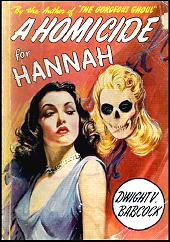
The heroine of all three of his novels, Hannah Van Doren, has an angelic appearance that would lend itself to a Disney movie; this innocent facade, however, is at great odds with her connoisseur’s passion for murder and mayhem.
Not for nothing is she known as “Homicide Hannah, the Gorgeous Ghoul” — even though her interest is purely professional (she writes for True Crime Cases magazine) and her background made that interest inevitable (her father was an L.A. homicide cop).
In this, Hannah’s first adventure, she teams with Joe Kirby, an out-of-work custom-car salesman, to solve the murder of Steve Wurtzel, a gambling buddy of Joe’s who turns up knifed in his (Kirby’s) apartment on Christmas Day.
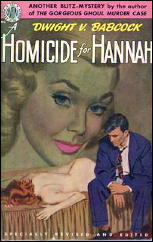
The situation is further complicated by two facts: one, on Christmas Eve Kirby rescued a beaten (and very naked) young woman from an alley and gave her shelter, but she has now disappeared; and two, in her place is Wurtzel’s corpse and a Christmas present left by Kirby’s wealthy girlfriend, Veronica Smith (“Miss Gotrocks” ), whom he is afraid committed the murder.
When Hannah learns of these events, she reacts as if Joe has given her a Christmas present: a homicide for Hannah. She and Joe chase all over Hollywood and environs, bucking heads with, among others: wisecracking reporters; hard-boiled cops; the idle (and not so idle) rich; a man with a face that looks like a skeleton; frequenters of the track at Santa Anita (where Veronica’s horse, Princess Pat, is running on opening day); and a chemist who works for a firm that manufactures “Protexu,” a patented sanitary toilet seat cover.
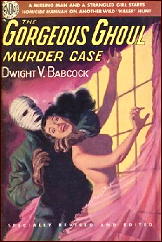
Babcock’s style here is less hard-boiled than in his Black Mask and other pulp work: there is plenty of breezy humor to go along with the fast action, and some delightful glimpses into the mad social whirl of Hollywood just prior to World War II.
Hannah is a lively and irrepressible character — and as it turns out, a very good detective. A Homicide for Hannah is good fun from start to finish.
Hannah’s other two adventures are The Gorgeous Ghoul (1941), in which she and Joe set out to collect a fat reward by returning a missing college boy to his family and in so doing run afoul of murder, a crazy inventor with the instincts of a Peeping Tom, and a very unusual matriarch named Sybil; and Hannah Says Foul Play! (1946), in which Hannah and Joe travel to Palm Springs during its annual western-days celebration and become mixed up in the murder of a Hollywood gossip columnist.
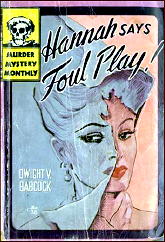
The latter title was published only in digest paperback form, as part of the Avon Murder Mystery Monthly series. Babcock’s only other novel is a collaboration with fellow pulp writer Day Keene — Chautauqua (1960), a mainstream historical with strong suspense elements, published under the joint byline of Day Keene and Dwight Vincent.
———
Reprinted with permission from 1001 Midnights, edited by Bill Pronzini & Marcia Muller and published by The Battered Silicon Dispatch Box, 2007. Copyright © 1986, 2007 by the Pronzini-Muller Family Trust.
Thu 2 Dec 2010
CAGE OF EVIL. United Artists, 1960. Ronald Foster, Pat Blair, Harp McGuire, John Maxwell, Doug Henderson, Helen Kleeb, Robert Shayne. Director: Edward L. Cahn.
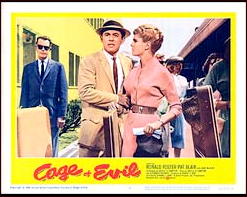
A standard entry black-and-white crime movie that more than likely wasn’t considered noir when it was made, but there’s no doubt that it was (or is) one.
Passed up for promotion too many times, when police detective Scott Harper (Ronald Foster), somewhat of a hothead, is assigned to get close to blonde nightclub hostess (and good friend of gangster Kurt Romack) Holly Taylor, played to icy perfection by Pat Blair, he ends up getting a little too close, and it doesn’t take much more to get him started down the path to ruin.
At first it’s only a small fortune in uncut diamonds that’s at play, but after two murders are committed, the stakes are raised a whole lot higher. Harper is smart but not lucky, and eventually, without giving away more than I should, his own brand of fortune runs out.
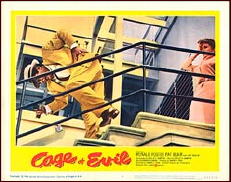
The story plays fast and loose on the details regarding proper police procedure, I should like to believe, and looking back at the last hour and ten minutes it took to watch it, there really isn’t a lot of action in this small budget crime film.
Nor do any of the cast have any name recognition, I don’t believe, but all of them have long resumes. (Pat Blair, the very lovely femme fatale in Cage, did have a long run on Daniel Boone, married to Fess Parker.)
They all know their marks, in other words, and while no new territory is broken, I wasn’t bored, either. There’s been no official DVD release, but the movie has played on TCM, so copies should be easy to find on the collector-to-collector circuit.
Wed 1 Dec 2010
Posted by Steve under
Reviews1 Comment
IT IS PURELY MY OPINION
Reviews by L. J. Roberts
KATE ELLIS – The Bone Garden. St. Martin’s Press, US, hardcover, July 2003. Originally published in the UK: Piatkus, hardcover, 2001; paperback, January 2010.
Genre: Police procedural. Leading character: Sgt. Wesley Peterson; 5th in series. Setting: England.
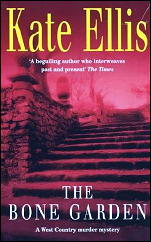
First Sentence: The man stared at the shape lying beneath the faded cover on the ancient iron bed and took another sip of wine.
Not only weeds are dug up during the restoration of a 17th century Devon garden at Earlsacre Manor, but skeletons. The first is of a woman who was buried alive, standing up.
While not of investigative concern to the Tradmouth police, the body in the caravan is. The only clue to the identity of the victim is a link to Earlsacre. And what about the murder at the cricket pitch. Is that linked as well?
It’s the characters that keep me coming back to Kate Ellis’s books. With each book, we learn more about the main characters and we see their lives change and develop.
In this book, Wesley is a new father and both he, and his boss Gerry Heffernan, are promoted. Although the books are marketed as “A Wesley Peterson Crime Novel,†in some ways I find Heffernan the more interesting character, but they balance each other nicely. I love some of Heffernan’s expressions and he’s the kind of boss you’d love to have.
Add to the characters the plot, which is well done and contains excellent twists. I am never able to anticipate where the story is going or how it will end up. That’s always a very good thing. A series containing both ancient mysteries and contemporary ones could be formulaic.
Yes, the threads of having the present mirror the past are contrived. But they are also, beautifully woven, interesting and in this case, cleverly related to one of the principal characters.
With each book, I look forward to learning of the murders in each time period and how they will tie together. With ten more books and counting in the series, I am a happy reader, indeed.
Rating: Very Good.
Editorial Comment: A complete listing of the Wesley Peterson books may be found following LJ’s review of The Merchant’s House, the first in the series.
« Previous Page — Next Page »



